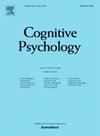通过可组装计算框架探索人类决策异常中的有限理性。
IF 3
2区 心理学
Q1 PSYCHOLOGY
引用次数: 0
摘要
一些看似非理性的决策行为(异常),曾经被视为人类认知的缺陷,最近从理性的角度得到了解释。其基本思想是,大脑在处理决策所需的数量(如价值、概率、时间等)方面的认知资源是有限的,而在针对环境进行优化的资源分配过程中,会产生特定的偏见。虽然呼吁提供规范的解释,但现有的资源理性模型存在局限性,例如模型之间的假设不一致,关注环境的一个特定方面的优化,以及对决策异常的有限覆盖。一个具有挑战性的异常现象是花生效应,这是一种在风险决策中普遍存在的现象,意味着价值处理和概率之间的相互依赖。为了扩展资源合理性方法来解释花生效应,我们在这里开发了一个计算框架——可组装资源理性模块(ARRM)——它将来自不同的有界理性决策模型的思想集成为自由组装的模块。该框架可以适应多种环境因素的共同作用,并允许与现有模型一起构建和测试新模型,从而有可能为有限理性建模开辟更广泛的决策现象。对于一个新的和三个已发表的数据集,涵盖了两个不同的任务范式和增益和损失域,我们的有界理性模型再现了花生效应的两个特征,并且在拟合人类决策行为方面优于先前的模型。本文章由计算机程序翻译,如有差异,请以英文原文为准。
Exploring the bounded rationality in human decision anomalies through an assemblable computational framework
Some seemingly irrational decision behaviors (anomalies), once seen as flaws in human cognition, have recently received explanations from a rational perspective. The basic idea is that the brain has limited cognitive resources to process the quantities (e.g., value, probability, time, etc.) required for decision making, with specific biases arising as byproducts of the resource allocation that is optimized for the environment. While appealing for providing normative accounts, the existing resource-rational models have limitations such as inconsistent assumptions across models, a focus on optimization for one specific aspect of the environment, and limited coverage of decision anomalies. One challenging anomaly is the peanuts effect, a pervasive phenomenon in decision-making under risk that implies an interdependence between the processing of value and probability. To extend the resource rationality approach to explain the peanuts effect, here we develop a computational framework—the Assemblable Resource-Rational Modules (ARRM)—that integrates ideas from different lines of boundedly-rational decision models as freely assembled modules. The framework can accommodate the joint functioning of multiple environmental factors, and allow new models to be built and tested along with the existing ones, potentially opening a wider range of decision phenomena to bounded rationality modeling. For one new and three published datasets that cover two different task paradigms and both the gain and loss domains, our boundedly-rational models reproduce two characteristic features of the peanuts effect and outperform previous models in fitting human decision behaviors.
求助全文
通过发布文献求助,成功后即可免费获取论文全文。
去求助
来源期刊

Cognitive Psychology
医学-心理学
CiteScore
5.40
自引率
3.80%
发文量
29
审稿时长
50 days
期刊介绍:
Cognitive Psychology is concerned with advances in the study of attention, memory, language processing, perception, problem solving, and thinking. Cognitive Psychology specializes in extensive articles that have a major impact on cognitive theory and provide new theoretical advances.
Research Areas include:
• Artificial intelligence
• Developmental psychology
• Linguistics
• Neurophysiology
• Social psychology.
 求助内容:
求助内容: 应助结果提醒方式:
应助结果提醒方式:


